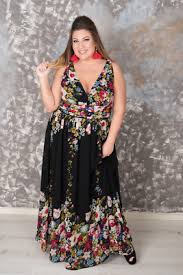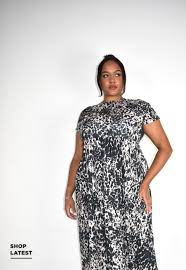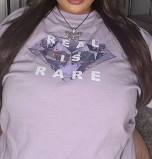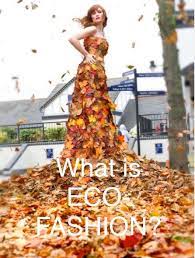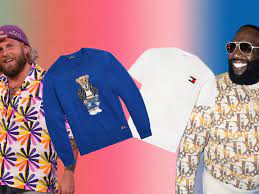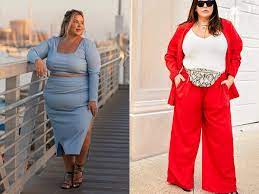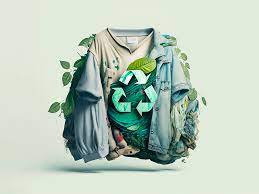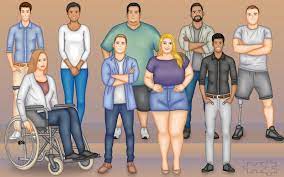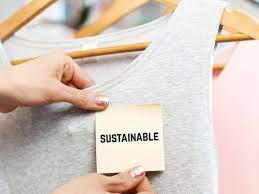Eco Fashion: Making a Sustainable Statement
Fashion has always been a powerful form of self-expression. However, in recent years, there has been a growing awareness of the environmental impact caused by the fashion industry. As a result, eco fashion has emerged as a sustainable alternative that allows individuals to make a stylish statement while reducing their carbon footprint.
Eco fashion, also known as sustainable fashion or ethical fashion, encompasses various practices that prioritize environmental and social responsibility throughout the entire lifecycle of a garment. From sourcing materials to manufacturing processes and even packaging, every aspect is carefully considered to minimize harm to the planet.
One key aspect of eco fashion is the use of sustainable materials. Designers are increasingly turning to organic cotton, hemp, linen, and recycled fabrics instead of relying on resource-intensive materials like conventional cotton or synthetic fibers. These sustainable alternatives require fewer pesticides and chemicals during production and have a lower impact on water resources.
Another important element is fair trade and ethical production practices. Eco fashion aims to ensure that workers involved in the manufacturing process are treated fairly and paid living wages. By supporting brands that prioritize ethical labor practices, consumers can contribute to improving working conditions in the industry.
Additionally, eco fashion promotes recycling and upcycling as ways to reduce waste. Many designers now create collections using pre-existing garments or fabrics that would otherwise end up in landfills. This not only reduces waste but also adds uniqueness and creativity to each piece.
The concept of slow fashion is also closely associated with eco fashion. It encourages consumers to invest in high-quality garments that are designed to last for years rather than following fast-paced trends that lead to excessive consumption and disposal. By choosing timeless pieces made with durable materials, individuals can build a more sustainable wardrobe while reducing their overall environmental impact.
Furthermore, eco fashion extends beyond clothing itself. Accessories made from recycled materials such as bags made from upcycled plastic bottles or jewelry crafted from reclaimed metals are gaining popularity for their eco-friendly appeal.
The rise of eco fashion has also paved the way for innovative and sustainable practices, such as 3D printing and zero-waste pattern cutting. These technologies minimize fabric waste during production and enable designers to create intricate designs with minimal environmental impact.
Choosing eco fashion is not only a responsible choice but also a way to support a more sustainable future. By embracing this movement, we can all contribute to reducing pollution, conserving resources, and promoting fair labor practices within the fashion industry.
So, the next time you’re looking to refresh your wardrobe, consider exploring eco fashion brands. Together, we can make a stylish statement while protecting our planet for future generations.
8 Benefits of Eco Fashion: Sustainable, Affordable, and Stylish Choices for a Greener Future
- Eco fashion is often made from sustainable materials such as organic cotton, hemp, bamboo and recycled plastic.
- It helps to reduce the environmental impact of the fashion industry by using fewer resources and reducing pollution.
- Eco fashion is generally more affordable than traditional fashion due to its use of natural materials and ethical production methods.
- By buying eco-friendly clothing, you are supporting a more sustainable approach to fashion which helps protect our planet for future generations.
- It can be fashionable and stylish while still being kinder to the environment than traditional fast-fashion items.
- Buying eco-friendly clothing helps support small businesses who are working hard to create sustainable products with minimal environmental impact.
- Eco fashion is often made with natural dyes which are better for your skin as they don’t contain harmful chemicals like conventional dyes do .
- Wearing eco-friendly clothing sends a positive message about sustainability and caring for our planet that others can see and appreciate too!
Challenges of Eco Fashion: Limited Availability, High Prices, Quality and Durability Issues
- Limited Availability
- High Prices
- Quality Issues
- Durability Issues
Eco fashion is often made from sustainable materials such as organic cotton, hemp, bamboo and recycled plastic.
Eco Fashion: Embracing Sustainable Materials
In the world of fashion, embracing eco-friendly practices has become more important than ever. One significant pro of eco fashion is its use of sustainable materials, such as organic cotton, hemp, bamboo, and recycled plastic. These materials not only reduce the fashion industry’s impact on the environment but also offer numerous benefits for both consumers and the planet.
Organic cotton is a prime example of a sustainable material used in eco fashion. Unlike conventional cotton, which relies heavily on pesticides and synthetic fertilizers, organic cotton is grown without harmful chemicals. This reduces water pollution and protects the health of farmers and surrounding ecosystems. Choosing garments made from organic cotton not only supports sustainable farming practices but also provides a softer and hypoallergenic option for consumers.
Hemp is another versatile material gaining popularity in eco fashion. It requires minimal water and pesticides to grow, making it an environmentally friendly alternative to traditional fabrics. Hemp fibers are durable, breathable, and naturally resistant to mold and UV rays. By incorporating hemp into clothing production, designers can create long-lasting garments that are both stylish and sustainable.
Bamboo fabric is another sustainable choice in eco fashion. Bamboo grows quickly without the need for excessive water or pesticides. It is naturally antibacterial, hypoallergenic, and has excellent moisture-wicking properties. These qualities make bamboo fabric ideal for activewear or everyday clothing that prioritizes comfort while reducing environmental impact.
Recycled plastic is an innovative solution to combat plastic waste in our oceans and landfills. By transforming discarded plastic bottles into polyester fibers or fabric blends, eco fashion brands help divert waste from ending up in our environment. This process significantly reduces energy consumption compared to producing new synthetic fibers from scratch. The resulting recycled plastic fabrics can be used to create various clothing items while minimizing our reliance on virgin resources.
Choosing garments made from these sustainable materials not only benefits the environment but also promotes healthier choices for consumers. These fabrics are often softer, more breathable, and less likely to cause skin irritations or allergies. By opting for eco fashion, individuals can feel good about their clothing choices while enjoying the comfort and quality that sustainable materials offer.
Eco fashion’s focus on sustainable materials is a step towards a more responsible and conscious fashion industry. By supporting brands that prioritize these materials, we can contribute to reducing our ecological footprint and inspire positive change within the fashion world. Let’s embrace eco fashion and make a stylish statement while protecting our planet for future generations.
It helps to reduce the environmental impact of the fashion industry by using fewer resources and reducing pollution.
Eco Fashion: Reducing the Environmental Impact of the Fashion Industry
The fashion industry has long been associated with excess consumption, resource depletion, and pollution. However, the rise of eco fashion offers a promising solution to these pressing environmental concerns. By using fewer resources and reducing pollution, eco fashion is helping to minimize the environmental impact of the fashion industry.
One significant pro of eco fashion is its emphasis on using fewer resources. Traditional clothing production relies heavily on resource-intensive materials like conventional cotton and synthetic fibers. These materials require large amounts of water, pesticides, and energy during cultivation and manufacturing. In contrast, eco fashion promotes the use of sustainable materials such as organic cotton, hemp, linen, and recycled fabrics. These alternatives require fewer resources to produce while still offering durability and style.
By reducing resource consumption, eco fashion helps to conserve precious natural resources like water and land. It lessens the strain on ecosystems affected by intensive farming practices and reduces deforestation for fiber production. By opting for garments made from sustainable materials, consumers can actively contribute to preserving our planet’s resources for future generations.
Another crucial aspect is the reduction of pollution associated with traditional fashion production processes. The manufacturing of clothing often involves chemical dyes, finishes, and treatments that release harmful pollutants into air and water sources. Eco fashion brands prioritize using non-toxic dyes or natural dyeing methods that have a lower impact on the environment.
Furthermore, eco fashion encourages responsible waste management practices. Many brands focus on recycling or upcycling materials to create new garments or accessories instead of discarding them as waste. This approach not only reduces landfill waste but also promotes a circular economy where resources are kept in use for as long as possible.
By choosing eco fashion options, individuals can actively contribute to reducing pollution levels in both air and water systems. This not only benefits human health but also helps preserve biodiversity in ecosystems affected by textile production.
In conclusion, eco fashion offers a significant pro in its ability to reduce the environmental impact of the fashion industry. By using fewer resources and adopting sustainable production practices, eco fashion brands are paving the way towards a more sustainable and responsible future. By supporting these brands, consumers can make a positive impact on the environment while still expressing their unique style and love for fashion.
Eco fashion is generally more affordable than traditional fashion due to its use of natural materials and ethical production methods.
Eco Fashion: Affordable Style with a Conscience
When it comes to fashion, many people assume that sustainable and ethical clothing comes with a hefty price tag. However, eco fashion has proven this notion wrong by offering affordability without compromising on style or ethical values.
One of the key reasons why eco fashion is more affordable than traditional fashion is its use of natural materials. Sustainable brands often opt for organic cotton, hemp, linen, and other plant-based fibers that are not only better for the environment but also more cost-effective than synthetic materials. These natural fabrics are often sourced responsibly and require fewer resources during production, resulting in lower manufacturing costs.
Moreover, ethical production methods play a significant role in keeping the prices of eco fashion affordable. By prioritizing fair trade practices and ensuring workers receive fair wages, sustainable brands build strong relationships with their suppliers and manufacturers. This allows them to maintain transparency throughout the supply chain while avoiding unnecessary markups that can drive up prices.
Another factor contributing to the affordability of eco fashion is the focus on timeless designs. Instead of following fast-paced trends that quickly go out of style, sustainable brands often create classic pieces that can be worn season after season. By investing in high-quality garments designed to last, consumers can reduce their overall spending on clothing while still maintaining a stylish wardrobe.
Additionally, the growing popularity of eco fashion has led to increased competition among sustainable brands. This competition encourages pricing strategies that are more accessible to a wider range of consumers. As more people embrace sustainable fashion choices, economies of scale come into play, enabling brands to produce larger quantities at lower costs.
It’s important to note that while eco fashion may be more affordable than traditional fashion in many cases, there are still luxury or high-end sustainable options available for those seeking premium quality and design.
Choosing eco fashion not only allows individuals to enjoy stylish clothing at reasonable prices but also gives them peace of mind knowing they are supporting ethical practices and reducing their environmental impact. By opting for sustainable alternatives, we can all contribute to a more inclusive and responsible fashion industry.
So, the next time you’re on the hunt for new additions to your wardrobe, consider exploring eco fashion brands. You might be pleasantly surprised by the affordability and style options available, all while making a positive impact on the planet and supporting ethical values.
By buying eco-friendly clothing, you are supporting a more sustainable approach to fashion which helps protect our planet for future generations.
Supporting a Sustainable Future with Eco-Friendly Clothing
In a world where fast fashion dominates, choosing eco-friendly clothing is a powerful way to make a positive impact on our planet. By opting for sustainable fashion, you become an advocate for a more responsible and ethical approach to dressing, ensuring a better future for generations to come.
Eco-friendly clothing is designed with the environment in mind. It embraces practices that minimize harm to our planet throughout its entire lifecycle. From the sourcing of materials to production methods and even packaging, every step is carefully considered to reduce waste, conserve resources, and limit pollution.
By purchasing eco-friendly clothing, you actively support brands that prioritize sustainable practices. These brands often use organic or recycled materials, reducing the need for harmful pesticides and minimizing the strain on our natural resources. Choosing such garments helps protect ecosystems and biodiversity while preserving the delicate balance of our planet.
Moreover, eco-friendly clothing promotes fair labor practices. Many sustainable fashion brands ensure that workers involved in the manufacturing process are treated fairly and paid decent wages. By supporting these brands, you contribute to improving working conditions within the industry and help create a more equitable society.
When you invest in eco-friendly clothing, you also play a part in reducing textile waste. Fast fashion has led to a culture of disposable clothing, where garments are worn only a few times before being discarded. This contributes to overflowing landfills and environmental degradation. In contrast, sustainable fashion encourages quality over quantity by producing durable garments that are meant to last longer. By embracing this approach, you help break the cycle of excessive consumption and reduce your own carbon footprint.
Furthermore, by choosing eco-friendly clothing, you become an ambassador for change. Your conscious decision sends a message to the fashion industry that sustainability matters. As more consumers demand sustainable options, brands are encouraged to adopt greener practices on a larger scale. Together, we can drive significant positive change within the industry and inspire others to follow suit.
In conclusion, by buying eco-friendly clothing, you actively support a more sustainable approach to fashion. You contribute to the protection of our planet, conserve resources, promote fair labor practices, and help combat textile waste. Your choices today have the power to shape a brighter future for generations to come. So, let’s embrace eco-friendly fashion and be part of the movement towards a more sustainable world.
It can be fashionable and stylish while still being kinder to the environment than traditional fast-fashion items.
Eco Fashion: Where Style Meets Sustainability
In today’s fast-paced world, fashion trends come and go at lightning speed. But what if we told you that you can stay fashionable and stylish while also being kinder to the environment? That’s where eco fashion steps in, offering a sustainable alternative to traditional fast-fashion items.
One of the major advantages of eco fashion is that it allows you to express your personal style without compromising on your environmental values. Gone are the days when sustainable clothing meant sacrificing style or settling for plain, shapeless garments. Today, eco fashion brands have embraced creativity and innovation, offering a wide range of fashionable and stylish options that cater to various tastes.
From chic dresses made from organic cotton to trendy denim created from recycled materials, eco fashion has proven that sustainability and style can go hand in hand. Designers are pushing boundaries by incorporating unique patterns, textures, and cuts into their collections while keeping the planet’s well-being at the forefront.
By choosing eco-friendly clothing, you not only look good but also contribute to reducing the negative impact of the fashion industry on our environment. Traditional fast-fashion items often rely on cheap labor and harmful production practices that result in pollution, excessive waste, and exploitation of workers. In contrast, eco fashion brands prioritize sustainable materials, ethical manufacturing processes, and fair trade practices.
Moreover, opting for eco fashion means supporting a circular economy. Many sustainable brands encourage recycling and upcycling by using materials derived from post-consumer waste or repurposing existing garments. This reduces the demand for new resources and minimizes waste sent to landfills.
Another pro of eco fashion is its longevity. Unlike fast-fashion items that quickly lose their appeal or fall apart after a few wears, sustainable clothing is designed with durability in mind. By investing in high-quality pieces made from quality materials, you can build a wardrobe that stands the test of time both in terms of style and durability.
Ultimately, eco fashion empowers individuals to make conscious choices that align with their values. It allows you to express your unique style while making a positive impact on the planet. By embracing this movement, you become part of a global community that values both fashion and sustainability.
So, next time you’re on the lookout for a stylish addition to your wardrobe, consider exploring eco fashion brands. You’ll discover a world of trendy, fashionable options that not only make you look good but also contribute to a kinder and greener future.
Buying eco-friendly clothing helps support small businesses who are working hard to create sustainable products with minimal environmental impact.
Supporting Small Businesses: The Eco-Friendly Fashion Advantage
In the world of fashion, there is a growing movement towards eco-friendly clothing that not only benefits the environment but also supports small businesses. These forward-thinking companies are working tirelessly to create sustainable products with minimal environmental impact, and by choosing to buy from them, we can contribute to their success.
One of the significant advantages of eco-fashion is that it provides a platform for small businesses to thrive. These independent brands often prioritize ethical and sustainable practices, dedicating themselves to creating clothing that is both stylish and environmentally conscious. By purchasing from them, we not only promote sustainability but also help these businesses grow and make a positive impact on the industry.
When you choose eco-friendly clothing from small businesses, you are supporting their mission to reduce carbon emissions, minimize waste, and use eco-conscious materials. These brands often prioritize sourcing materials locally or from sustainable suppliers, ensuring that their production processes have a minimal environmental footprint.
Moreover, small eco-fashion businesses tend to have closer relationships with their suppliers and manufacturers. This allows them to maintain transparency throughout the entire supply chain and ensure fair labor practices. By supporting these brands, you are indirectly contributing to better working conditions for garment workers and promoting social responsibility within the industry.
Another advantage of buying eco-friendly clothing from small businesses is the unique and individualistic nature of their products. Unlike mass-produced items found in fast fashion chains, these smaller brands often offer limited edition or handmade pieces. With attention to detail and craftsmanship, each garment becomes a work of art that tells a story.
By purchasing from these environmentally conscious brands, you become part of a community dedicated to making a positive impact on the planet. Many small eco-fashion companies actively engage with their customers through educational content about sustainability or by participating in initiatives that support environmental causes. By joining this community, you can gain knowledge about sustainable practices while advocating for change.
So next time you’re looking for new clothing, consider exploring the world of eco-friendly fashion and supporting small businesses. By choosing sustainable options, you not only contribute to a greener future but also help these passionate entrepreneurs continue their journey towards a more environmentally conscious industry.
Together, let’s celebrate the creativity, innovation, and dedication of these small businesses that are making a big difference in the world of fashion.
Eco fashion is often made with natural dyes which are better for your skin as they don’t contain harmful chemicals like conventional dyes do .
The Benefits of Natural Dyes in Eco Fashion: Nurturing Your Skin and the Environment
When it comes to eco fashion, one of the significant advantages lies in its use of natural dyes. Unlike conventional dyes that contain harmful chemicals, natural dyes offer a healthier alternative that benefits both your skin and the environment.
Conventional dyes, commonly used in mainstream fashion, often contain toxic substances such as heavy metals and synthetic chemicals. These chemicals can cause skin irritations, allergies, and even pose long-term health risks. In contrast, natural dyes are derived from plant-based sources such as flowers, leaves, roots, and bark. They harness the beauty of nature without compromising our well-being.
Natural dyes are gentle on the skin due to their non-toxic composition. They do not contain harmful substances like formaldehyde or azo compounds that can trigger allergic reactions or irritate sensitive skin. By embracing eco fashion with natural dyes, you can enjoy clothing that not only looks beautiful but also feels comfortable against your skin.
Moreover, natural dyes offer a wide range of captivating hues that cannot be replicated by synthetic alternatives. Each plant source brings its unique palette of colors to the table. From vibrant yellows derived from turmeric to soft pinks obtained from madder root, these natural shades add depth and character to garments while showcasing the beauty of nature’s diversity.
In addition to benefiting your skin, opting for eco fashion with natural dyes also contributes to a greener planet. Conventional dyeing processes release toxic chemicals into water bodies during production, polluting ecosystems and endangering aquatic life. On the other hand, natural dyeing practices are generally more sustainable and environmentally friendly.
The extraction process for natural dyes often involves traditional techniques that have been passed down through generations. These methods typically require less energy consumption compared to industrial dyeing processes used in conventional fashion production. Furthermore, many plants used for natural dyes can be cultivated sustainably, reducing the carbon footprint associated with the production of synthetic dyes.
By choosing eco fashion made with natural dyes, you not only prioritize your skin’s health but also contribute to a cleaner and safer environment. Supporting brands that embrace this sustainable approach encourages the fashion industry to shift towards more responsible practices.
So, next time you’re looking for clothing that not only looks good but also cares for your well-being, consider exploring eco fashion pieces made with natural dyes. Embrace the beauty of nature while making a positive impact on your skin and our planet.
Wearing eco-friendly clothing sends a positive message about sustainability and caring for our planet that others can see and appreciate too!
Wearing Eco-Friendly Clothing: A Fashionable Message of Sustainability
In a world where our choices have a profound impact on the environment, eco fashion offers a way to make a positive statement through our clothing. By opting for eco-friendly garments, we not only dress ourselves stylishly but also send a powerful message about sustainability and caring for our planet.
When we choose to wear eco-friendly clothing, we become walking ambassadors for environmental consciousness. Our fashion choices speak volumes about our values and priorities, allowing others to see and appreciate the importance of sustainable practices. It’s like wearing our commitment to the planet on our sleeves, quite literally!
By donning eco-friendly garments, we demonstrate that fashion doesn’t have to come at the expense of the environment. We showcase that it is possible to look good while making responsible choices. This can inspire others to question their own consumption habits and consider more sustainable alternatives.
Moreover, wearing eco-friendly clothing sparks conversations and raises awareness about sustainability. When someone admires your outfit or asks about your choice of materials, it opens up an opportunity to discuss the importance of ethical fashion and its positive impact on the planet. Through these conversations, we can encourage others to think more consciously about their own fashion choices.
Beyond individual interactions, wearing eco-friendly clothing also influences the broader fashion industry. As more people embrace sustainable fashion, it sends a clear message that there is demand for ethical practices in the market. This encourages designers and brands to prioritize sustainability in their collections and production processes, leading to a positive shift in the industry as a whole.
Additionally, by choosing eco-friendly garments, we support brands that are committed to reducing their environmental footprint. This creates a ripple effect as more companies are incentivized to adopt sustainable practices in response to consumer demand. Our collective choice for eco-fashion has the potential to drive significant change within the fashion industry.
So next time you put together an outfit or go shopping for new clothes, consider the impact your choices can have. By wearing eco-friendly clothing, you not only express your personal style but also send a powerful message about sustainability and caring for our planet. Let’s make fashion a force for positive change and inspire others to join us on this journey towards a more sustainable future.
Limited Availability
Limited Availability: The Challenge of Eco Fashion
While eco fashion has gained significant traction in recent years, it still faces a notable challenge: limited availability. Compared to traditional fashion, eco-friendly clothing is often more expensive to produce and not as widely accessible, making it harder for consumers to find in stores or online.
One of the main reasons for this limited availability is the higher cost associated with producing eco fashion. Sustainable materials and ethical manufacturing practices often come at a higher price point than their conventional counterparts. This is due to several factors, such as the use of organic or recycled fabrics, fair wages for workers, and implementing environmentally friendly production processes.
These additional costs can make it challenging for eco fashion brands to compete with larger, mainstream fashion labels that benefit from economies of scale and lower production costs. As a result, eco fashion may be priced higher to cover these expenses.
Furthermore, the limited availability of eco fashion can also be attributed to the smaller scale of production. Many sustainable fashion brands are independent or boutique labels that prioritize quality over quantity. While this approach ensures attention to detail and craftsmanship, it also means that their collections are produced in smaller quantities.
The combination of higher production costs and smaller-scale operations often results in limited stock being available in stores or online platforms. This scarcity can make it frustrating for consumers who are interested in embracing sustainable fashion but struggle to find the desired items.
However, there are ways to overcome this challenge. Firstly, consumers can explore local boutiques or ethical online marketplaces that specialize in curating a selection of eco-friendly brands. These platforms often provide a range of unique and sustainable options that may not be found in mainstream retail outlets.
Additionally, supporting emerging designers who prioritize sustainability can help promote greater availability of eco fashion in the long run. By purchasing from these up-and-coming brands, consumers contribute to their growth and success while encouraging more sustainable practices within the industry.
It’s important to remember that the limited availability of eco fashion is not a reflection of its value or quality. Rather, it highlights the need for continued support and demand from consumers to drive change within the fashion industry. As awareness grows and more people embrace sustainable fashion, it is likely that the availability will increase, making eco-friendly options more accessible to all.
In conclusion, while limited availability may pose a challenge for those seeking eco fashion, it should not discourage individuals from pursuing sustainable choices. By actively seeking out ethical brands and supporting their efforts, we can collectively contribute to a future where eco fashion becomes more widely available and affordable for everyone.
High Prices
High Prices: The Trade-Off of Eco Fashion
Eco fashion has gained significant traction as a sustainable alternative to traditional fashion. However, one con that often comes up is the higher price tag associated with eco-friendly garments. This is primarily due to the additional resources and processes required to create them.
When it comes to eco fashion, materials play a crucial role. Sustainable fabrics like organic cotton, hemp, or recycled fibers are generally more expensive than conventional materials. Organic farming methods and the use of recycled materials require extra effort and investment, leading to higher production costs.
Moreover, eco fashion often involves smaller-scale production and local sourcing, which can also contribute to increased prices. Supporting fair trade practices and ethical labor standards means paying workers fair wages and ensuring safe working conditions, which can add to the overall cost of producing eco-friendly garments.
Another factor that affects pricing is the attention given to reducing waste during production. Zero-waste pattern cutting techniques aim to utilize every inch of fabric efficiently, minimizing waste but requiring more time and expertise from designers. Such meticulous processes inevitably result in higher manufacturing costs.
Additionally, certifications and labels that verify sustainable practices also come at a cost. Brands investing in eco-friendly certifications need to cover expenses related to audits, inspections, and ongoing compliance with strict standards.
While the higher prices associated with eco fashion can be seen as a drawback for some consumers, it is important to consider the long-term benefits. By investing in high-quality sustainable clothing that lasts longer than fast fashion alternatives, individuals can reduce their overall consumption habits while contributing less waste to landfills.
Furthermore, choosing eco fashion supports a shift towards a more responsible industry. It encourages brands to adopt sustainable practices on a larger scale by creating demand for environmentally friendly products. As demand increases over time, economies of scale may help lower prices in the future.
Ultimately, it’s essential for consumers interested in eco fashion to recognize that they are not just purchasing clothing; they are investing in a more sustainable future. While higher prices may pose a temporary challenge, the positive impact on the environment and social well-being makes it a worthwhile trade-off for many individuals.
In conclusion, the higher prices associated with eco fashion reflect the additional resources, labor, and sustainable practices involved in its production. While it may require a shift in budgeting or prioritization for some, choosing eco fashion contributes to a more sustainable industry and helps create positive change for our planet and communities.
Quality Issues
Quality Issues: A Challenge for Eco Fashion
While eco fashion has gained significant traction in recent years, it is not without its challenges. One of the cons associated with eco fashion is the potential for quality issues. This can arise due to the materials used or the production methods employed in creating sustainable garments.
One of the main factors contributing to quality issues in eco fashion is the use of alternative materials. While sustainable fabrics like organic cotton, hemp, and recycled fibers are environmentally friendly, they may have different characteristics compared to traditional materials. For instance, organic cotton may be softer but more prone to shrinkage or wrinkling. This can affect the overall durability and longevity of the garment.
Additionally, some sustainable materials may not have the same level of availability or consistency as conventional fabrics. This can result in variations in texture, color, or even strength between different batches of fabric. As a result, there may be discrepancies in quality between individual garments.
Furthermore, certain production methods employed in eco fashion can also contribute to quality concerns. For example, some designers prioritize handcrafted techniques or small-scale production processes to reduce environmental impact. While these methods often enhance sustainability and support local artisans, they may also lead to variations in stitching, finishing, or overall construction.
It’s important to note that not all eco fashion brands face quality issues; many prioritize both sustainability and craftsmanship. However, consumers should be aware that there might be instances where compromises are made due to limitations imposed by sustainable practices.
To mitigate these challenges, it is crucial for consumers to do their research before purchasing eco-friendly clothing. Reading reviews and seeking out reputable brands known for their commitment to both sustainability and quality can help ensure a satisfactory experience.
Moreover, investing in well-made pieces from established eco fashion labels or seeking out collaborations between sustainable designers and established brands can provide a balance between style and durability.
In conclusion, while quality issues can be a con associated with eco fashion due to the materials used or production methods employed, it is essential to approach this aspect with an informed perspective. By understanding the potential challenges and making conscious choices, individuals can still enjoy the benefits of sustainable fashion while minimizing the risk of compromising on quality.
Durability Issues
Durability Issues: A Challenge in Eco Fashion
Eco fashion has undoubtedly gained momentum as a sustainable alternative to conventional fashion. However, like any movement, it also faces its own set of challenges. One such concern is the durability of eco-friendly fabrics, which may not always match the longevity of their conventional counterparts.
One of the key aspects of eco fashion is the use of sustainable materials such as organic cotton, hemp, and recycled fibers. While these materials have numerous environmental benefits, they may sometimes lack the same level of durability found in conventional fabrics.
The durability issue arises due to several factors. Firstly, eco-friendly materials often undergo less chemical processing during production compared to conventional fabrics. This can result in a softer and more comfortable feel but may also make them more susceptible to wear and tear over time.
Additionally, some sustainable fabrics have natural characteristics that affect their durability. For example, organic cotton can be prone to shrinking or losing shape after repeated washing. Recycled fibers may also have limitations in terms of strength and resilience compared to virgin fibers.
It’s important to note that not all eco-friendly fabrics suffer from durability issues. Advances in technology and research have led to the development of more robust sustainable materials that can withstand frequent use and washing without compromising quality.
However, for certain eco-fashion garments made from less durable materials, there are steps consumers can take to maximize their lifespan. Proper care and maintenance play a crucial role in extending the life of any clothing item. Following care instructions provided by manufacturers and adopting gentle washing practices can help minimize damage and preserve the garment’s integrity.
Another approach is to focus on timeless designs rather than following fast-paced trends. By investing in classic pieces that transcend seasonal fads, individuals can reduce the need for frequent replacements and contribute to a more sustainable wardrobe overall.
While durability issues pose a challenge within eco fashion, it’s essential to consider the bigger picture. The environmental benefits offered by sustainable materials still outweigh this con. By choosing eco-friendly options, we actively contribute to reducing pollution, conserving resources, and supporting ethical practices in the fashion industry.
As the demand for eco fashion continues to grow, it also drives innovation. Researchers and designers are constantly working towards improving the durability of sustainable fabrics without compromising their eco-friendly qualities. In time, we can expect even greater advancements in this area.
In conclusion, while durability issues may be a drawback in some instances of eco fashion, it’s important to weigh them against the larger benefits of sustainability. By making informed choices and adopting responsible consumption habits, we can navigate this challenge and contribute to a more environmentally conscious future.
